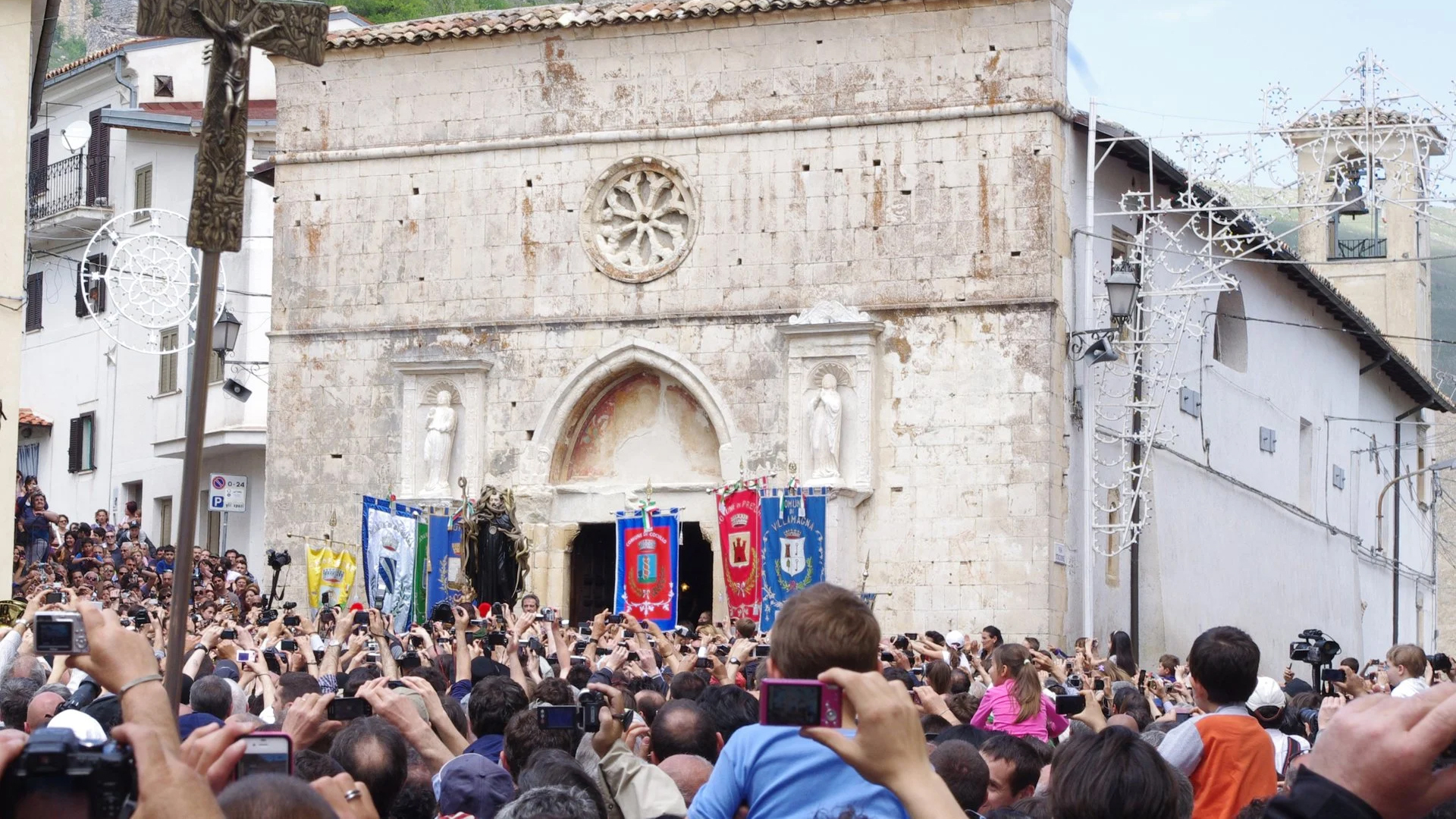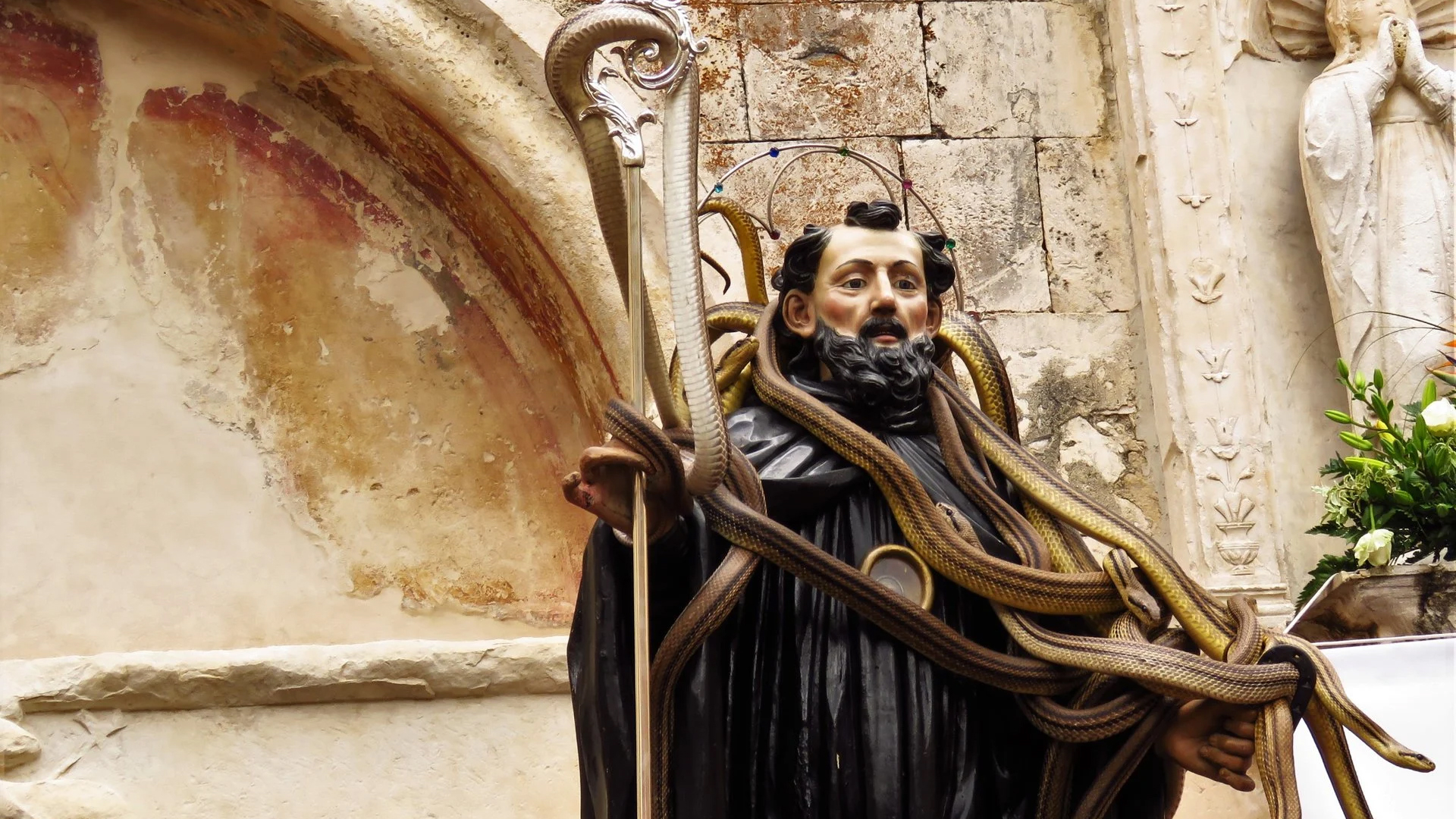Visitors travel to Italy every day to see world-renowned art, taste regional cuisine, and explore the natural wonders of the country. Some even go one step further to experience “sagre” and “feste” hosted by villages, towns, and cities across Italy each year to honor the feast days of saints, harvests, and other enduring traditions. This is one of the most interesting aspects of Italian culture and acts as a window into local life.
Some festivals are dedicated to subjects like local foods, while others are more unusual, like celebrating snakes. La Festa dei Serpari, or the “Festival of the Snake-Catchers” is a festival held every May 1st in celebration of Saint Dominic, born in Cocullo in 951 AD. Thousands of people make their way to the tiny town of Cocullo in the Majella Mountains of Abruzzo to experience one of Italy’s most bizarre festivals.

(Photo Credit: Kalusha)
Supposedly, there are three origin stories of the Festa dei Serpari. The first origin story dates back nearly 3000 years to the Marsi tribes, the original inhabitants of the area, who worshiped the goddess Angitia. The symbol of the goddess was a snake which she used to repel attacks from wolves, bears, and malaria and cure snake bites. The second dates all the way back to 700 B.C. The people of what is now modern-day Cocullo experienced problems in tending to their fields that were infested with snakes. Apollo ordered the village to wrap the snakes around his statue to tame the beasts and continue farming their crop. Lastly, in the 11th century, legend has it that Saint Dominic cleared local fields that were overrun by snakes, and as a sign of thanks the locals have paraded his statue and snakes around the streets since 1392.

(Photo Credit: BBC)
The festival officially begins on March 19th, when local snake catchers, “serpari”, around Cocullo begin to catch 4 types of harmless snakes. Once the snakes have been caught the fangs are removed. Once May 1st arrives, there is an early morning mass in the church of Cocullo where the local people ring a small bell using their own teeth for protection for the following year - this is a reference to the saint’s protection over the bites of wolves, snakes, dogs, and toothaches. A wooden statue of Saint Domenico is released from the church and the “serpari” drape the harmless snakes over the statue. Saint Dominic’s jewel-encrusted gold frame is ready to be processed through the ancient streets of Cocullo. Four male residents are chosen to carry the heavy statue during the procession around the town. Meanwhile, two girls dressed in the traditional costume of Abruzzo escort the statue and carry sacred baskets of “ciambelli” on top of their heads.

(Photo Credit: Telegraph)
Live snakes are also around the neck and arms of the “serpari” and the faithful, who slowly follow the statue, singing in the middle of the crowd. How the snakes behave is a sign to the locals of Cocullo - if the snakes surround the head of the statue, that is a good omen, and the crowd cheers. The procession weaves its way back to the church where it all began and a huge fireworks display begins its 10-minute show. After the festival, the snakes are released back into the wild.
The snake has always represented danger or an image of evil. In Italy, snakes evoke a complex mixture of fascination and fear. Attending this festival will fill you with awe and mystery as the Festa dei Separi represents the mythical jubilation over the dark forces of evil. It also honors the ancestors and environment of Cocullo. To experience the essence of a truly authentic part of Italy, don’t miss out on this incredible day.
Arianna DiCicco
Arianna DiCicco is an educator and writer from California, born into an Italian American restaurant family with strong ties to her grandparents’ home in Abruzzo, Italy. She has lived in San Francisco, Rome and New York City where she’s made deep connections within the Italian communities and gained new perspectives about her own culture. With a Masters in International Education, Arianna has a love and passion for learning and educating others about Italian history & culture.

